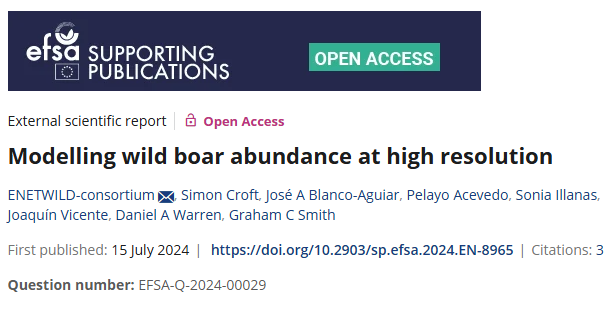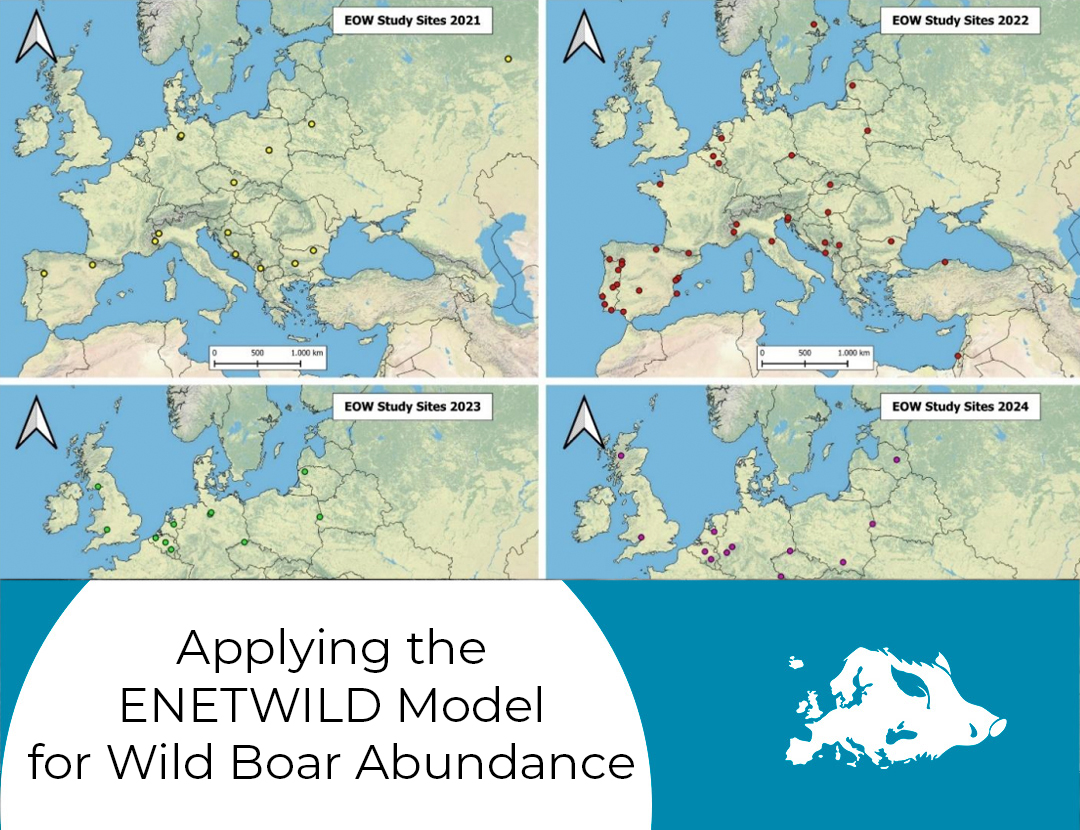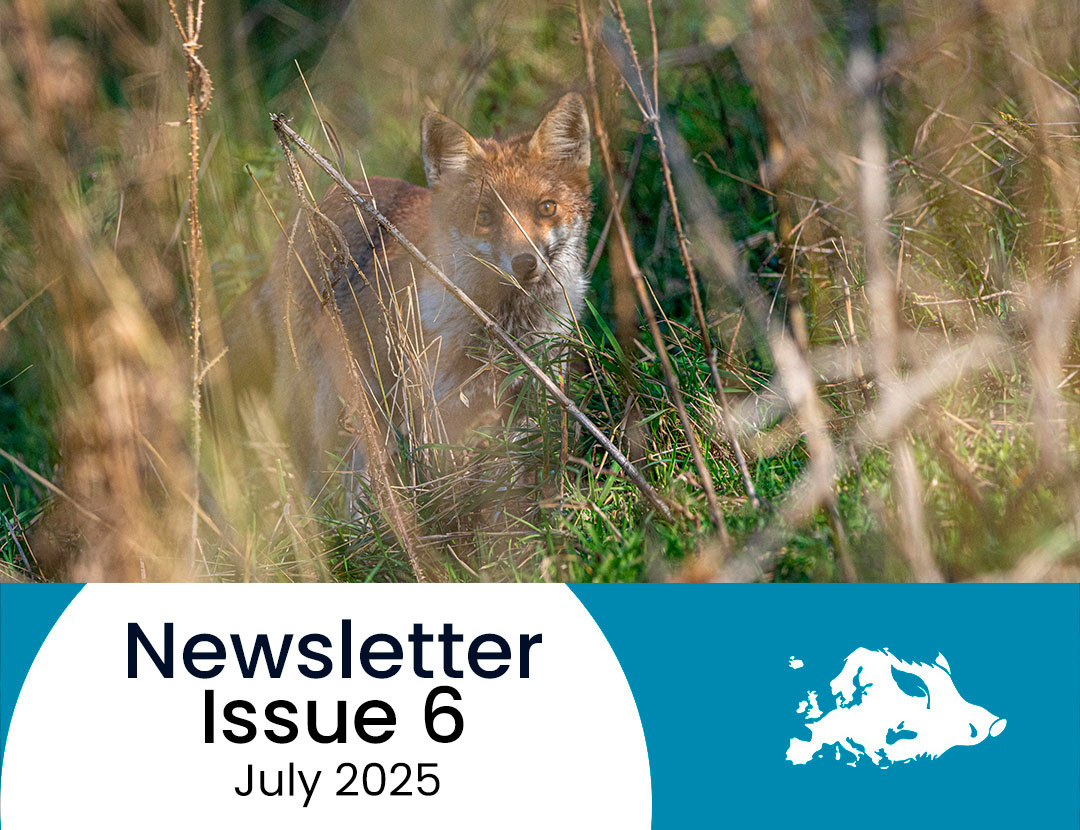Welcome to the ENETWILD Newsletter!
ENETWILD is an international network of wildlife professionals focused on integrating wildlife management with pathogens’ surveillance and management. The project is funded by EFSA.
In this newsletter you will stay in the loop on the latest publications and updates in the wildlife world, you will have access to event information and will get to know more about the people involved in the project.
In this edition, reading the newsletter all the way to its end has a reward: you will find the “Find the Mammal” game
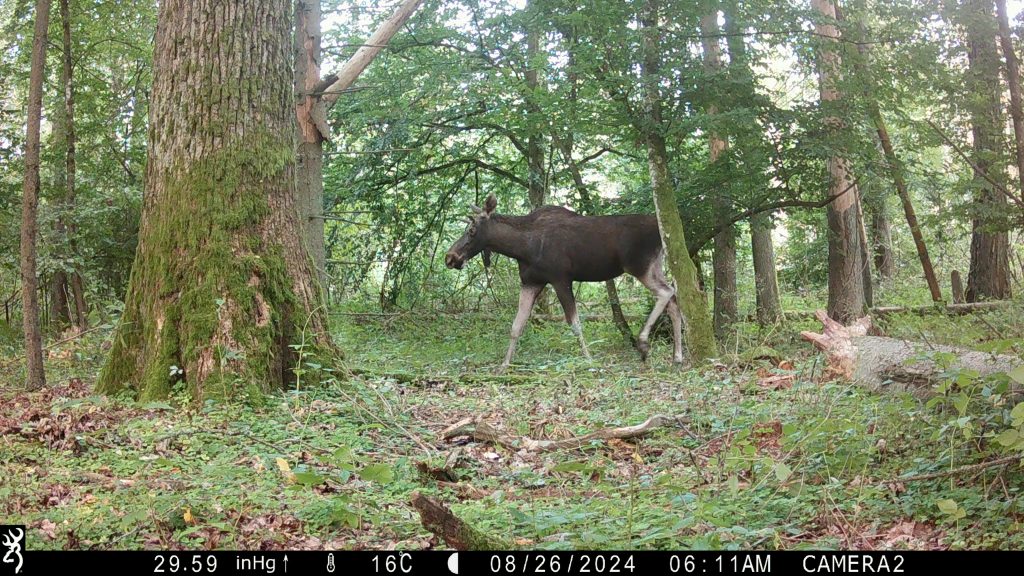
Photo credit: MRI PAS, European Observatory of Wildlife (EOW).
Latest publications
Avian influenza spreads among vultures in Spain and France
https://www.irec.es/en/publicaciones-destacadas/gripe-aviar-propaga-buitres-espana-y-francia/
The need to regulate lead in game meat
https://www.irec.es/en/publicaciones-destacadas/necesidad-regular-plomo-carne-de-caza/
Rabbits on the road: Disentangling the factors driving the warren’s abundance on motorways
https://www.irec.es/en/publicaciones-destacadas/factores-proliferacion-madrigueras-conejo-autovias
Rabbits and hares: possible key role in leishmaniasis
https://www.irec.es/en/publicaciones-destacadas/conejos-y-liebres-papel-clave-leishmaniosis/
Can we estimate the abundance of wildlife from its distribution and certain environmental characteristics?
https://www.irec.es/en/publicaciones-destacadas/estimar-abundancia-fauna-distribucion-y-caracteristicas-ambientales
Environmental factors that favor mosquitoes that transmit the West Nile fever virus
https://www.irec.es/en/publicaciones-destacadas/factores-ambientales-favorecen-mosquitos-virus-de-la-fiebre-del-nilo-occidental/
Latest publicationsiMammalia experiences significant grouth, iMammalia needs you:
Help fill the data gaps in Eastern Europe
The smartphone app iMammalia was launched by ENETWILD in late 2019. Over the last 6 years we have collected 29,000 mammal records in 38 out of 43 European countries, but we need your help.

These records (iMammalia on the left) are submitted to the global database, GBIF (image on right shows all artiodactyl records since 2019). As you can see the number of records in Eastern Europe is much less than elsewhere and this reduces our ability to produce reliable maps of species abundance.
We are looking for people to promote iMammalia, particularly in East European countries. The app is available in the following languages: English, Albanian, Croatian, Czech, French, German, Greek, Italian, Macedonian, Montenegrin, Norwegian, Polish, Portuguese, Serbian, Slovakian, Spanish and Ukrainian. Swedish and Turkish will be added soon. If you would be able to help promote the app in any of these countries please contact enetwild@unito.it. We would appreciate support from volunteers to help complete translations into Bulgarian and Lithuanian, or start translations into Hungarian or Romanian or other languages. Additionally, please feel free to download it, register, and use it yourself.
These records have been used to produce distribution maps for wild boar, ungulates and carnivores, and these will be updated soon. These reports are available here:
Updates
Image processing for wildlife density estimation based on camera trappingpdates
The European Observatory of Wildlife is offering the opportunity to contribute to the implementation of the density estimates protocol. Participants will receive training and will work directly with real camera trap images of wildlife. This hands-on experience helps young researchers develop valuable practical experience in conservation science while contributing directly to progressing wildlife research.
EOW 2025 holds virtual training on Agouti platform and density estimation procedures

The second EOW 2025 training course took place on Tuesday the 16th of September via Teams meeting. The training course was divided into two main parts. The first part focused on the Agouti platform, creation and management of projects and sequence processing and digitizing, while the second one did target the standardized analysis procedures for the production of density estimates. The EOW training courses are taught to all the network’s collaborators and their staff, to provide them with all the details of the protocol and dispel any doubt. The course was successful, with a broad participation and several questions asked.
As usual the link to the recording of the training course has been shared on the EOW website and on the ENETWILD YouTube channel.
iMammalia app experiences significant growth and international expansion

The iMammalia app is rapidly expanding its reach, now boasting an impressive collection of almost 30,000 mammal records. This remarkable growth underscores the app’s increasing popularity and effectiveness as a tool for citizen science and biodiversity monitoring.
Building on this success, iMammalia is set to launch soon in several new countries, specifically targeting alpine areas, and South-Eastern Europe. This international expansion marks a pivotal moment for the app, opening doors to broader participation and data collection across Europe. A key benefit of this launch is the opportunity to make the app available in even more languages, further enhancing its accessibility and encouraging a more diverse global community of users to contribute to mammal conservation efforts. This initiative will empower more individuals to engage with nature and contribute valuable data, solidifying iMammalia’s role as a leading platform for wildlife observation.
Successful meeting with hunting bag data providers to enhance wild boar abundance modelling
On October 13th, a crucial annual meeting was held with hunting bag data providers, who are key contributors to the development of wildlife models. The gathering served as a platform to present the new wild boar abundance model and to foster improved collaboration on data collection and sharing. Attendees were informed about how their valuable data is utilized and were given a preview of the updated model. Additionally, plans for a new data collection campaign were outlined, aiming to further enhance the accuracy and scope of ongoing research. You can check out the intere meeting
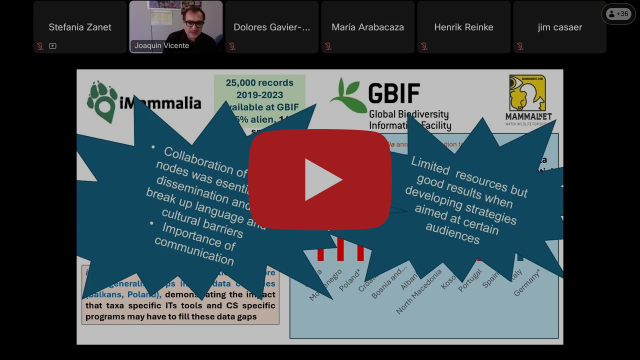
EOW Senior Citizen Science Program: looking, identifying animals with camera traps
Across Italy, senior citizens are joining forces with researchers to explore wildlife through camera-trap photos. By classifying and analyzing images, they demonstrate how powerful experience and curiosity are in science.
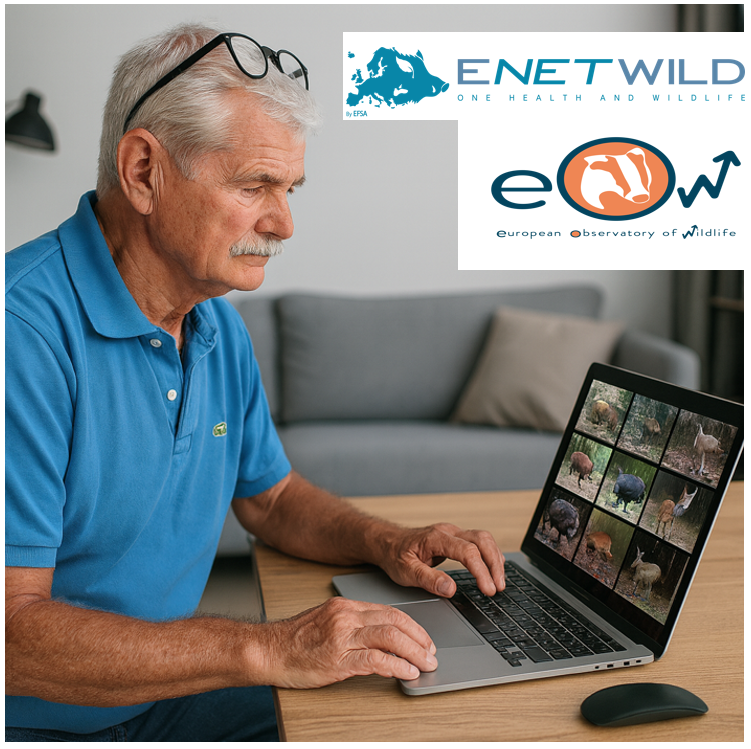
All that’s needed is a computer and an internet connection. Participants can work comfortably from home, at their own pace, while receiving support and feedback from the ENETWILD team.
This initiative offers a meaningful way to stay engaged, connect with nature, and make a real contribution to biodiversity monitoring.
If you’d like to take part—or involve a local group of nature-loving seniors—the ENETWILD team welcomes your collaboration. No technical skills required—just enthusiasm, precision, and a spirit of discovery.
Citizen science knows no age. Put experience and passion to work for biodiversity!
Zagreb to host 14th international symposium on wild boar and other suids in 2026
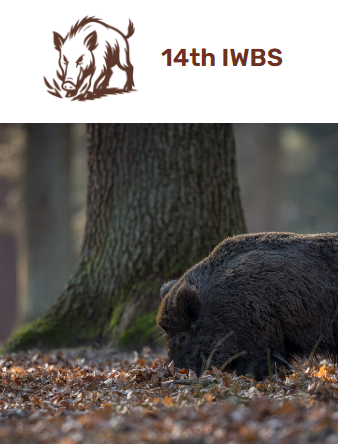
The 14th International Symposium on Wild Boar and Other Suids will take place in Zagreb, Croatia from September 9–11, 2026. The event, held under the theme “Rooting towards the Future,” will gather researchers and wildlife managers to address key issues in suid ecology and management.
Hosted at the University of Zagreb Faculty of Agriculture, the scientific program will focus on topics including:
- African swine fever and other diseases.
- Biology and genetics.
- Ecology and behavioural ecology.
- Human-wildlife interactions and management policies.
Interview

Relax and enjoy this interview with Christian Gortázar, Professor of Animal Health at IREC Institute, Universidad de Castilla-La Mancha, Spain
Could you start by telling us a bit about your role on the ENETWILD Advisory Board?
Some decades ago, the perception of the role of wildlife in the epidemiology of infections shared with livestock and humans was like a minor, secondary actor. This has changed due to a huge growth in our knowledge of wildlife ecology and epidemiology. Subsequently, years ago I witnessed the need in EFSA to gather accurate “wildlife denominator data” and thus, the birth of ENETWILD. I feel kind of one of the intellectual parents of this funny creature, which has successfully expanded to cover many other relevant aspects of wildlife management and research.
From your advisory perspective, what are ENETWILD’s most significant achievements to date?
Acquiring essential information on European wildlife populations, defining and harmonizing census methods, diagnostic tools and other wildlife-related resources, and making this information available both for EFSA and for the public is a huge achievement. The current epidemiological situation places some species in the centre, and there is no doubt that the work done on wild boar, including the mapping, is among the most significant (i.e., useful) achievements so far.
“The work done on wild boar, including the mapping, is among the most significant achievements so far”
Looking forward, what are the biggest emerging challenges for wildlife health in Europe?
Some of the biggest challenges are no longer emerging but already endemic in large parts of Europe. I mean African swine fever (ASF), highly pathogenic avian influenza (HPAI) and animal tuberculosis (TB), among others. Wildlife is of utmost relevance for understanding the epidemiology and for attempting to control these three diseases. And, probably, all three will need additional measures beyond culling and biosafety, probably considering domestic animal or wildlife vaccination and other, related, interventions.
Furthermore, there are lots of exotic diseases just at our backdoor, which may enter the Union and significantly affect both livestock and wildlife. This has happened in recent years with the epizootic haemorrhagic disease emergence in cattle and red deer. Several of the Foot-and-mouth and Similar Transboundary -FAST- diseases (as defined by FAO) have recently emerged in Europe and wildlife might play a role as either indicators, victims, bridge hosts or even maintenance hosts. Fortunately, this is apparently not the case of the ongoing lumpy skin disease outbreaks.
What are the key lessons from recent emergencies, like Avian Influenza (HPAI) in mammals or Bluetongue Virus (BTV)?
Expect the unexpected. And expect it anywhere, anytime. To me, the repeated emergence of new bluetongue serotypes in the Netherlands or the recent FMD emergences in Germany and Hungary suggest that human travel (moving humans, animal products and possibly vectors) and animal transport, including wildlife transports (by plane or by other means), represent a huge risk that needs to be considered very seriously for this and other diseases. For ASF, we know that larger infection spreads are always human driven. However, long range wildlife movements are also possible, especially regarding migratory birds and HPAI or flavivirus diseases such as West Nile fever. Another relevant aspect we tend to forget regarding wildlife is that they are not just host for the pathogen, but eventually also for the vector. Culicoides, mosquito or tick populations may benefit form abundant wildlife, which is not kept indoors nor treated with acaricides. And please forget the idealistic view of wildlife living in pristine forests: they are on our farms, sharing the water and feed with livestock, and in our cities as well – and their populations are dynamic. It is important to keep in mind that many of our currently relevant diseases and many more of the potentially emerging ones have an important wildlife component: hence the value of ENETWILD.
What current initiatives or efforts do you believe are contributing most effectively to advance wildlife health?
Science, science and science. And bringing part of the new knowledge to the ground in form of data and tools to improve monitoring, early detection and intervention assessment, as ENETWILD is doing.
What should be ENETWILD’s main contribution to tackling future challenges?
Is this in the hands of the consortium? In any case, the consortium is experienced and flexible enough to rapidly generate essential baseline information on any wildlife species or host-pathogen system and to adapt to a broad range of challenges, including those derived from changing wildlife and vector distributions or, for instance, the risks of biological warfare.
“There are lots of exotic diseases just at our backdoor, which may enter the Union and significantly affect both livestock and wildlife.”
In the end, what is the main legacy you hope ENETWILD will accomplish?
I’d say it has already been accomplished: a rich resource with high-quality information on European wildlife, useful for risk analysis and other purposes, and a huge effort towards harmonizing integrated wildlife monitoring. When one sees the “output and resources” page on the ENETWILD website, one feels a dream has come true. This was just in our imagination a few years ago.
Many thanks professor.
Let’s play “FIND THE MAMMAL”!
Reaching this far has its rewards. Here is the game:
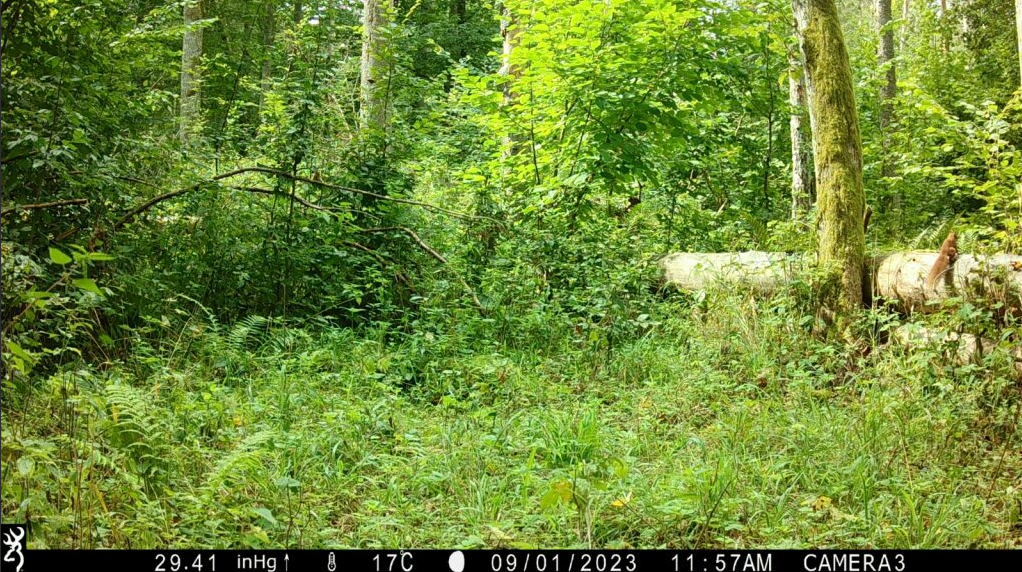
Photo credit: MRI PAS, European Observatory of Wildlife (EOW).


